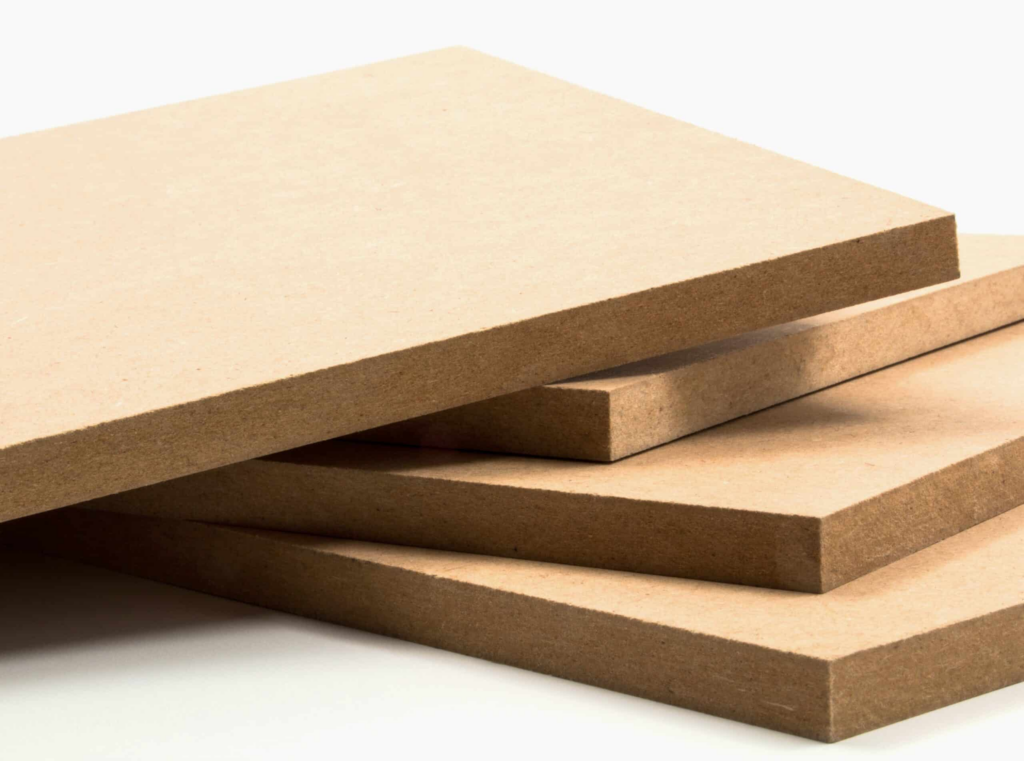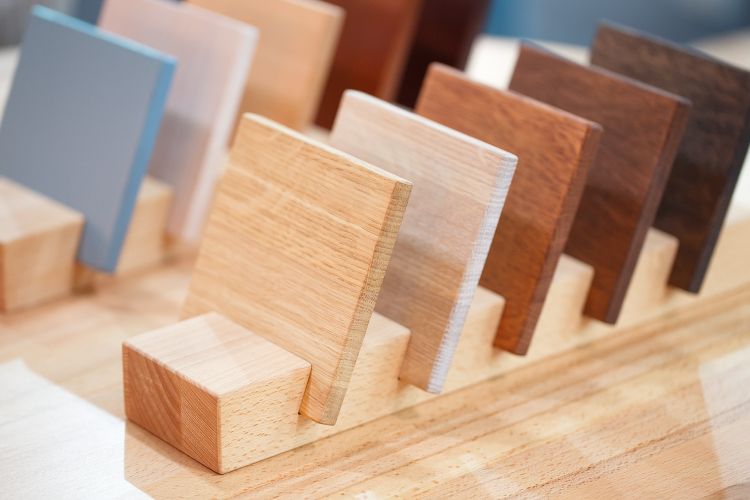Medium Density Fiberboard (MDF) has evolved as a flexible and commonly utilised material in woodworking and interior design. This post delves into the features, production process, and various MDF wood applications, illumining why it has become a popular choice for crafters, designers, and DIY enthusiasts.
Explore the versatility of MDF wood and its wide-ranging applications in this comprehensive guide.
Discover the unique properties that make Medium Density Fiberboard a popular furniture and interior decor choice. Gain insights into its uses, benefits, and tips for maximizing the potential of MDF in various projects.
Understanding MDF wood : Composition and Characteristics

MDF, or Medium Density Fiberboard, is a type of engineered wood. It’s made by breaking down wood fibers and mixing them with resin and wax. The mixture is then pressed into sheets under high pressure and heat. MDF is smooth, dense, and uniform, making it popular for furniture, cabinets, and other woodworking projects.
Characteristics
- MDF wood is an excellent choice for a variety of treatments since it has a surface that is both smooth and uniform.
- The consistency of its composition guarantees stability and reduces the likelihood of warping or splitting by a significant amount.
- The versatility of MDF wood makes it possible to create complicated shapes and exact details because it can be easily cut and sculpted.
- Paints, veneers, and laminates are easily absorbed by the flat surface of MDF wood, which provides an appearance that may be customised.

The Manufacturing Process: From Fibers to Boards
Fiber Preparation
The wood fibres can be sourced from various sources, including sawdust, MDF wood chips, and goods made from recovered wood. After that, they are sent through a defibrillator, a piece of machinery that uses steam and mechanical force to break down the MDF wood into fine fibres. Next, the fibres are screened and dried to remove any contaminants and excess moisture that may be present.
Blending and Resin Application
After the fibres have been dried, they are placed in a blender and combined with wax and resin. The resin is a glue that holds the threads together, while the wax contributes to the board’s resistance to water. The resin can be either urea-formaldehyde (UF) or melamine-urea-formaldehyde (MUF), depending on the characteristics required in the end product.
Hot Pressing
After the mixture has been blended, it is put through a continuous press and subjected to high pressure (about 25 MPa) and high temperature (approximately 200 degrees Celsius) for a few minutes. As a result, the resin will harden, and the fibres will come together to form a solid panel.
By altering the pace at which the press is operating, it is possible to modify the thickness of the board. After being hot-pressed, the committee can cool before being cut to the desired dimensions.
Cutting and Finishing
The MDF board can be cut into various shapes and sizes based on the customer’s specified requirements. In addition, the board can be treated using multiple techniques, including painting, veneering, or laminating, to improve its appearance and durability. MDF boards are utilised in various applications, including but not limited to furniture, cabinets, flooring, wall panels, and doors.
Applications in Interior Design and Construction
Cabinetry and Furniture

MDF boards can be utilised to produce various furniture pieces, including kitchen cabinets, wardrobes, bookcases, tables, chairs, and more. It is possible to achieve a natural wood effect by covering MDF boards with wood veneers or laminates, painting or staining them to fit the room’s colour scheme, or having them covered with wood veneers. Additionally, MDF boards can be sliced and carved into various forms and patterns, such as curves, arches, or geometric motifs, to impart flair and individuality to the furniture.
Trim and Molding
Baseboards, crown moulding, window casings, door frames, and other trim elements can all be crafted using MDF boards. Additional little features include door frames. Because MDF boards may be shaped and sized in any way, they are an excellent material for creating complicated and individualised designs.
Additionally, MDF boards can be painted or stained to coordinate with the colour of the wall or to contrast with it, producing an impact on the visual presentation.
Compared to solid wood trim, MDF boards are more affordable and more straightforward to install, making them an alternative that is both practical and suitable for the budget.
Doors and Panels
Doors and wall panels for the interior of a building can be made with MDF boards. The strength and stability of MDF boards are characterised by the fact that they do not break or warp due to variations in temperature or humidity.
In addition, MDF boards can be treated using various techniques, such as painting, veneering, or laminating, to generate a variety of distinct appearances and effects. The use of MDF boards allows for the creation of either simple or panelled doors, as well as decorative wall panels that feature grooves, textures, or patterns.
Firstly, MDF is known for its uniformity and smoothness, making it ideal for creating sleek and seamless surfaces. This consistency allows for precise cutting and shaping, ensuring that doors and panels fit perfectly into their intended spaces.
Additionally, MDF is relatively affordable compared to solid wood, making it a cost-effective option for both residential and commercial projects. Its affordability doesn’t compromise its durability, as MDF is resistant to warping and cracking, providing long-lasting performance.
Moreover, MDF’s density allows for intricate designs and detailing, making it suitable for various styles and aesthetic preferences. Whether it’s for modern, minimalist doors or intricately panelled walls, MDF can be easily customized to achieve the desired looks.
Furthermore, MDF can be painted, veneered, or laminated with different finishes, offering endless design possibilities. This versatility makes it a popular choice for interior designers and architects seeking to create unique and personalized spaces.
Shelving Systems
The usage of MDF wood boards allows for the creation of shelving units that may be utilised for either storage or exhibition reasons. As a result of its durability and capacity to handle immense weights, MDF wood boards are an excellent choice for storing various objects, including books, appliances, and other items.
If you want to create a contrast or a focal point in the area, you may also paint or laminate MDF wood boards to fit the design and theme of the room. Making a shelving system that is both unique and functional can be accomplished by cutting MDF boards into a variety of shapes and sizes, such as cubes, rectangles, or hexagons, and then arranging them in a specific configuration.

Conclusion
Finally, Medium Density Fiberboard has progressed from a simple engineered wood product to a flexible and essential material in modern woodworking and interior design. Its ability to mix price, adaptability, and customisation has moved it to the forefront of material options. MDF wood is a durable and versatile material that offers unlimited possibilities in MDF wood working, whether you are constructing furniture or upgrading interiors.
Transform your living spaces with the perfect blend of style and functionality. Explore our comprehensive guide on Home Decor, where we get into innovative ideas to elevate your surroundings.
We hope you found this post interesting. If you want to see more of our content, you can visit our website Wehomedeco.com for more articles, tips, and resources. You can also follow us on social media to stay updated with our latest posts. We would love to connect with you and hear your feedback. Here are our social media links:
1 thought on “An Exclusive Guide to MDF Wood and Its Applications (2024)”